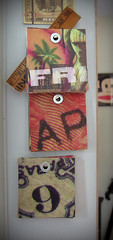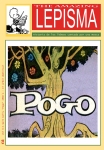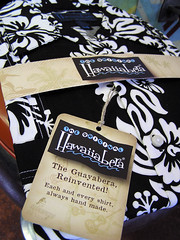
Meet Paula Scher. A ferocious defender of language, she has given voice to many of America's iconic brands.
Unless you're part of the clubby graphic-design fraternity, you may never have heard of Paula Scher, but it's nearly impossible not to know her work. Every time you pass a Citibank ATM or hand over one of its credit cards with the iconic red-arched "Citi" logo, you're in her orbit. When you open a box from Tiffany, with its slender, elegant typeface, you're decoding a message she has sent you (namely, "This had to be pricey!"). If you get subversive pleasure reading Jon Stewart's snarky faux textbook, America (The Book), or are charmed by the signs on the New York subway for the Metropolitan Opera, or look back wistfully on the loopy spaceship cover of the first Boston album, you're under the spell of this astonishingly versatile, formidably talented designer.
Within the design community, Scher is known both for her passionate populism--she has little patience for esoteric "just those of us who speak Helvetica" snobbery--and for her take-no-prisoners defense of good work. "As a designer, Paula has no particular ideological point of view," says Michael Bierut, her partner at the prestigious design firm Pentagram. "She's really, really eclectic. She only cares about making things that are good."
Corporate clients who have worked with her marvel at her willingness to fight for what she thinks is the best solution to any given problem. "She's uncompromising," says Susan Avarde, managing director of global branding for Citigroup's consumer businesses. "That stance can feel challenging, but for us as an organization, it was the right thing." Scher's Citibank identity campaign gave coherence to a politically fraught corporate merger (the logo cleverly used the "t" in Citi as the handle for the old Traveler's insurance umbrella) and made the resulting behemoth simpler and more approachable.
Scher's Valkyrie reputation stands in stark contrast to the woman herself, a slight blonde with a wicked sense of humor who roams New York's Pentagram offices trailed by an Australian shepherd named Mattie. And her bravado, Scher confides, is in many ways a construct built out of necessity. It isn't easy being a woman in a profession dominated by men on both the design and client sides. Earlier in her career, she says, "When I would be in a room with a man, all eyes would go to him. I always felt sidelined. I had to work so hard to hold attention."
She compensated with wit and verbal acuity. "I styled myself as a young smart-ass," she says. "It served me reasonably well for a number of years."
The woman is too modest. You don't get a medal from the American Institute of Graphic Arts, a place in the Art Directors Club Hall of Fame, representation in the collections of MoMA and the Cooper-Hewitt, and become a Pentagram partner just for being brassy.
Still, the kickass street-fightin' woman is never far off. Take, for example, her most recent accolade: being named a finalist for a National Design Award for communication design. Honorees were invited to the White House for breakfast, an invitation few could resist. Scher, however, refused to go, writing a letter (cosigned by four other winners) protesting the Bush administration's "prolonged assault on meaning."
"I'm not going to put on a party dress and play nicey-nicey because Laura Bush is having tea with people she doesn't know who the hell they are anyway," she bristles.
That kind of outspokenness can scare away timid clients, says Bierut. "I've learned a lot from Paula about the advantage of being blunt and cutting to the chase. There's no point in luring people into thinking you're a nice, accommodating person who will do it any way they want if you're concealing this spine of steel."
It's a lesson Scher learned painfully, early in her career, after watching good work get diluted as it worked its way through the corporate food chain. Most organizations, she says, rely on a process of checks and balances to ensure that the design adheres to some particular corporate strategy--that's the language MBAs understand. Trouble is, graphic design is inherently subjective. Who can say that one font is quantifiably better than another, or that one shade of Pantone green will lead inevitably to the destruction of your brand? Without a passionate advocate, a strong initial design may be nibbled away by bureaucrats, each eager to prove his worth with a tweak here and a nip there. Scher's ability to persuade, she realized, rested on two things: "I would have to be perceived, first, as an absolute authority, and second, as the most powerful person to approach about design.
"Fifty percent of doing good work is actually having it made," says Scher. "And getting it made means understanding the obstacles." The key, she quickly discovered, was having a client with both the vision to recognize good work and the power to pull the trigger. It's what Steve Jobs brings to Apple, or A.G. Lafley to Procter & Gamble. Barring a visionary at the helm, Scher prays that she can instill enough confidence and trust in her clients so that she can persuade them to follow her lead.
Fortunately, besides an outsize graphic talent, Scher also has an exceptional EQ: She can read a room and know instantly where the power lies, who's an ally, and who's potential trouble. Ultimately, though, the critical skill for Scher is knowing how to stay fresh, to keep challenging herself by tapping into what she calls the "charm of ignorance." When you're feeling stale, she says, the best thing you can do to shake things up is to "look at what you've been doing for the past five years--and stop. The thing that's most to be feared is doing the same thing over and over again."
Thanks to Fast Company





























































No comments:
Post a Comment